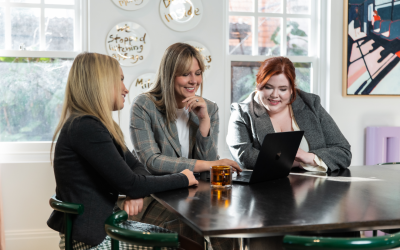There are plenty of theories about what the key to running a successful business is. Great people, excellent customer service, good logistics – the list seems unending. These can all add value, but each is just one of a number of factors contributing to the whole.
As any business owner knows, there’s no easy answer to running a successful organisation. It involves plenty of moving parts, and keeping a lot of balls in the air at once. Not only is organisational success inherently complex, but no two businesses are the same. Every company is totally unique and their paths to success are too.
So in light of this, how do we confidently approach the task of building better businesses? How do we create more robust strategies, and effectively put them in action?
Enter Design Thinking and Design Strategy.
Design Thinking is a methodology-based, human-centered approach to complex problem-solving that uses open-minded discovery and learning as a key factor in innovation. It responds to the reality that if a problem is truly complex (such as ‘how to run a successful business’), then it cannot possibly have a simple answer.
It has been adapted successfully into organisations in the form of Design Strategy, and is already standard amongst some of the largest and most successful multinational organisations in the world (think Apple, PepsiCo, and Nike) as well as numerous public and government bodies.It is also increasingly being used by medium-sized and small-businesses as a method of creating viable innovations and sustainable competitive advantage.
It’s not quite a science, and it’s not quite an art – rather, it’s a bit of both. It is a series of stages that follow a basic common order and pattern, roughly as follows:
Discovery
The earliest stage involves discovery – taking a completely open-minded attitude to learning and understanding everything in the context of the challenge. This can involve interviews, surveys, field observation – the fact is, the more facts the better.
Define the Problem, and identify the Opportunity.
Once the data has been gathered, it is used to understand, reframe, and define the deeper challenge underlying the observable symptoms. Strategic Designers usually employ special techniques or ‘tools’ to do this, and they vary according to the situation.
Ideate
With the big ‘challenge’ articulated, it’s time to start throwing ideas around about how it might be solved. There shouldn’t be any limit to the ‘wildness’ or scale of the idea, rather the value lies in thinking outside the box, challenging assumptions, and accumulating variety.
Prototype
This stage is about finding the best options from the Ideation activities, and starting to pull them together as possible solutions. This may include creating physical models, drawings, mock-ups, anything that will enable experimentation with the viability of the outcome without having to commit to it.
Test
Equipped with a prototype solution, it’s time to start experimenting to see how well it works. Once it’s in action, results may emerge that weren’t anticipated or wanted. If that’s the case, it means returning to the prior stages to refine the solution further. This may be repeated over and over, continually reviewing and improving.
Every stage of design thinking is an opportunity to step back and add new learnings to the stage that came before. It’s applicable to anything that requires nuance, from branding or marketing strategy to logistics, customer service, and finance. Furthermore, Design Thinking can be used for implementing far-reaching initiatives and innovations as a robust form of future-proofing for business.
To find out how design strategy can provide your organisation with considered, holistically-integrated competitive advantages, get in touch with us here.



